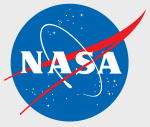Hobby Master HL1407 NASA Space Shuttle Challenger - OV-099, January 1986 (1:200 Scale)
"The Shuttle is to space flight what Lindbergh was to commercial aviation."
- Renkowned science fiction writer, Arthur C. Clarke
 The Space Shuttle Challenger disaster was a fatal incident in the United States space program that occurred on Tuesday, January 28th, 1986, when the Space Shuttle Challenger (OV-099) broke apart 73 seconds into its flight, killing all seven crew members aboard. The crew consisted of five NASA astronauts, one payload specialist, and a civilian schoolteacher. The mission carried the designation STS-51-L and was the tenth flight for the Challenger orbiter.
The Space Shuttle Challenger disaster was a fatal incident in the United States space program that occurred on Tuesday, January 28th, 1986, when the Space Shuttle Challenger (OV-099) broke apart 73 seconds into its flight, killing all seven crew members aboard. The crew consisted of five NASA astronauts, one payload specialist, and a civilian schoolteacher. The mission carried the designation STS-51-L and was the tenth flight for the Challenger orbiter.
The spacecraft disintegrated over the Atlantic Ocean, off the coast of Cape Canaveral, Florida, at 11:39 a.m. EST (16:39 UTC). The disintegration of the vehicle began after a joint in its right solid rocket booster (SRB) failed at liftoff. The failure was caused by the failure of O-ring seals used in the joint that were not designed to handle the unusually cold conditions that existed at this launch. The seals' failure caused a breach in the SRB joint, allowing pressurized burning gas from within the solid rocket motor to reach the outside and impinge upon the adjacent SRB aft field joint attachment hardware and external fuel tank. This led to the separation of the right-hand SRB's aft field joint attachment and the structural failure of the external tank. Aerodynamic forces broke up the orbiter.
The crew compartment and many other vehicle fragments were eventually recovered from the ocean floor after a lengthy search and recovery operation. The exact timing of the death of the crew is unknown; several crew members are known to have survived the initial breakup of the spacecraft. The shuttle had no escape system, and the impact of the crew compartment at terminal velocity with the ocean surface was too violent to be survivable.
The disaster resulted in a 32-month hiatus in the shuttle program and the formation of the Rogers Commission, a special commission appointed by United States President Ronald Reagan to investigate the accident. The Rogers Commission found NASA's organizational culture and decision-making processes had been key contributing factors to the accident, with the agency violating its own safety rules. NASA managers had known since 1977 that contractor Morton-Thiokol's design of the SRBs contained a potentially catastrophic flaw in the O-rings, but they had failed to address this problem properly. NASA managers also disregarded warnings from engineers about the dangers of launching posed by the low temperatures of that morning, and failed to adequately report these technical concerns to their superiors.
Approximately 17 percent of the American population witnessed the launch on live television broadcast because of the presence of high school teacher Christa McAuliffe, who would have been the first teacher in space. Media coverage of the accident was extensive; one study reported that 85 percent of Americans surveyed had heard the news within an hour of the accident. The Challenger disaster has been used as a case study in many discussions of engineering safety and workplace ethics.
Pictured here is a 1:200 scale replica of the Space Shuttle Challenger.
Sold Out!
Dimensions:
Length: 7-1/2-inches
Width: 4-1/2-inches
Release Date: November 2020
Historical Account: "STS-51-L" - STS-51-L was the disastrous 25th mission of the United States Space Shuttle program, the program to carry out routine transportation for Earth-to-orbit crew and cargo; as well as the final flight of Space Shuttle Challenger.
Planned as the first Teacher in Space Project in addition to observing Halley's Comet for six days, the mission never achieved orbit; a structural failure during its ascent phase 73 seconds after launch from Kennedy Space Center Launch Complex 39 on January 28th, 1986, killed all seven crew members - Commander Dick Scobee, Pilot Michael J. Smith, Mission Specialists Ellison S. Onizuka, Judith A. Resnik and Ronald E. McNair, and Payload Specialists Gregory Jarvis and Christa McAuliffe - and destroyed the orbiter.
Immediately after the disaster, NASA convened the Rogers Commission to determine the cause of the explosion. The failure of an O-ring seal on the starboard Solid Rocket Booster (SRB) was determined to have caused the shuttle to break-up in flight. Space Shuttle flights were suspended for 32 months while the hazards with the shuttle were addressed. The Space Shuttle program resumed with STS-26, launched two years after the accident.


